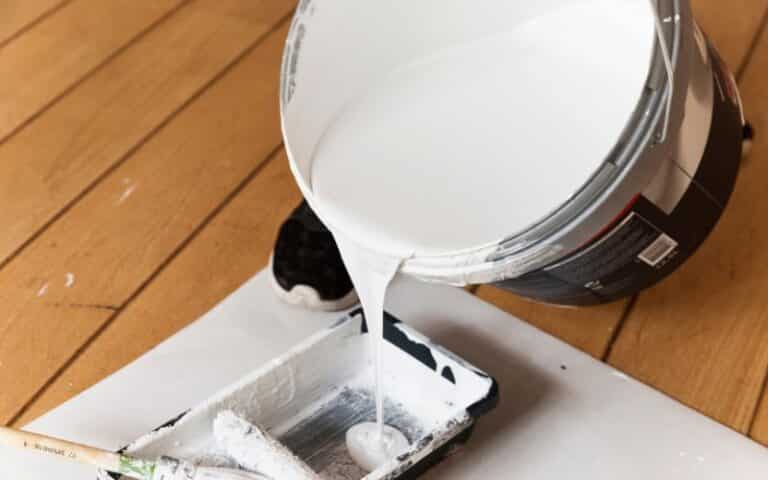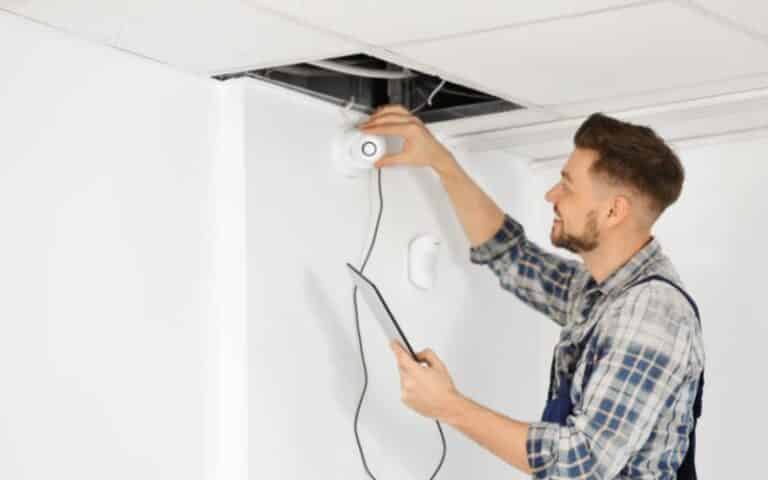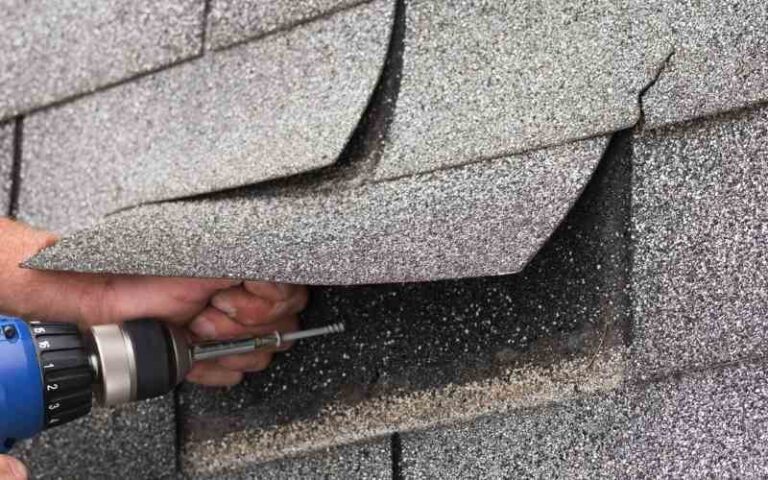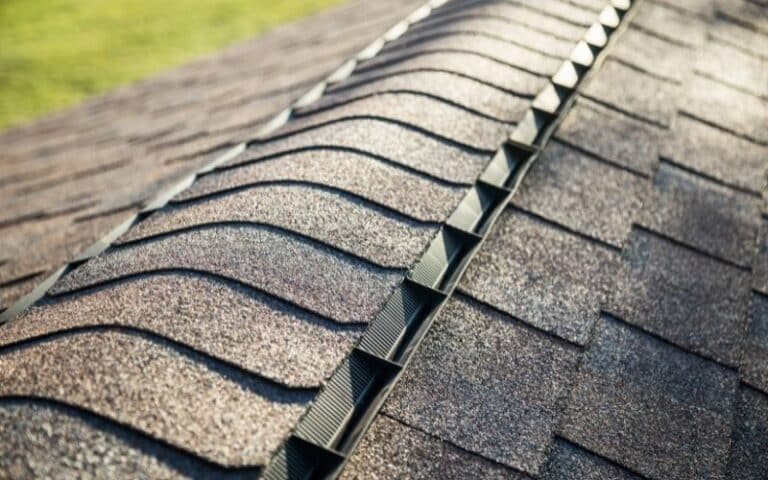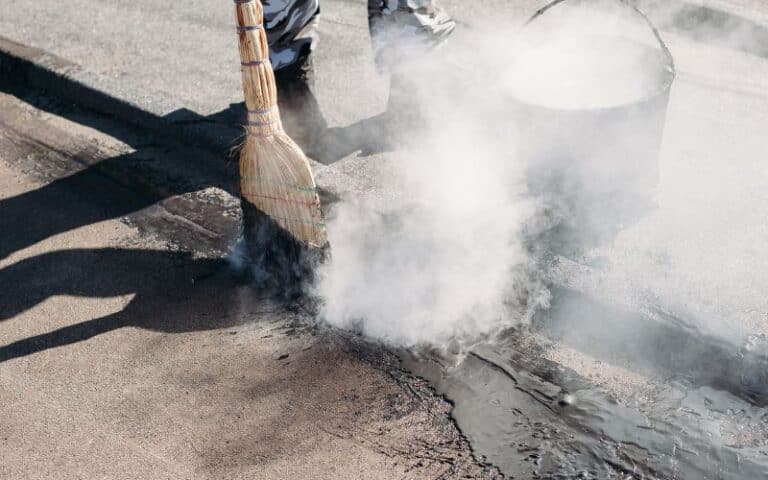Over time, the quality of a roof will dwindle. The rate of this degeneration depends considerably on the roof’s paint or coating.
Chalking is a plague of paints and hence, a catalyst for the deterioration of roofs. Knowing what it is and how to prevent it is pertinent in ensuring your roof lasts as long as it should.
Roof chalking is a degradation of a roof’s painting or coating. It’s the breakdown of the resins that make up paints resulting in a whitish residue on roof surfaces over time. If chalking occurs, it becomes necessary for you to repaint your roof.
Ready for a Roofing Quiz?
What Does Roof Chalking Mean?
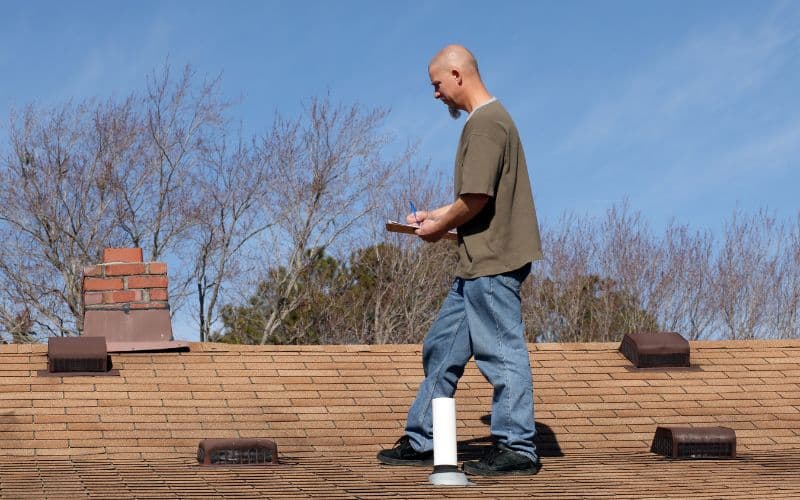
Roof chalking means the breakdown of roof paint or coating, resulting in a whitish, chalk-like residue.
Chalking results from the actions of environmental conditions on the constituents of paint. It is a natural process of degradation of the constituents of roof paints.
The resin of paint acts as a protective cover for the other paint components, including the color-providing pigment. It is also the adhesive that binds the paint to a surface.
Due to a roof’s exposure to sunlight, ultraviolet rays act on its paint’s resin and break it down. This action results in the loss of its protective and adhesive qualities.
The resin’s degradation exposes the pigment’s particles to UV rays and other elements. Over time, the pigment particles become loose and chalk-like.
Roof chalking is the wearing off of the roof’s paint and not actual damage to the roof. However, the paint protects the roof, and chalking can reduce its lifespan.
Taking proactive measures can prevent degradation and save your roof in the long run.
How Long Does a Metal Roof Paint Last?
The average lifespan of metal roof paint is 10 to 15 years. This duration is, however, subject to certain factors, and your metal roof paint may last longer or shorter.
The factors that determine how long metal roof paint last include the following:
#1. Environmental Conditions
The lifespan of metal roof paints depends considerably on the prevailing environmental conditions. These factors include UV rays, temperature, and moisture.
Constant exposure to the sun will shorten the lifespan of metal roof paint. Ultraviolet rays from the sun break down paint in a process called chalking, leading to its deterioration.
Hence, metal roof paint will last longer in areas with less sunlight than those constantly exposed to the scorching sun. Nibblers are the best, most precise tools to cut metal roofing.
Extreme temperature also contributes to fading in paints. Therefore, metal roof paint in extremely hot or cold places will deteriorate faster.
Furthermore, rain, snow, or other forms of moisture can alter the composition of paint. Constant exposure to these elements will break down metal roof paint and reduce its lifespan.
These factors greatly influence the lifespan of metal roof paint, as one can only partially control it. More so, they interact with the paint daily.
#2. Paint Quality
Another important factor influencing the lifespan of metal roof paint is its quality. The paint’s pigment and resin type determine the quality and how long it lasts.
Paint pigments can either be organic or inorganic. Organic pigments give a much brighter color and are more susceptible to fading and chalking.
Inorganic pigments, on the other hand, resist fading and last longer than inorganic ones.
The resin in metal roof paint also contributes to how long it lasts. Resin types are so important that paint system names reflect the ones used.
The table below classifies popular resins into good, better, and best to show which makes the paint more durable:
| Good | Better | Best |
|---|---|---|
| Polyester | Silicone-Modified Polyester (SMP) | Fluoroethylene Vinyl Ether (FEVE) |
| Plastisol | Polyvinylidene Fluoride (PVDF) |
Paint quality also includes the ideal paint for roofs. A paint intended for interior application will not last long if you use it on roofs.
#3. Quality of Service
The quality of service rendered while applying roof paint also determines how long it lasts. This factor includes the competence of the workers and the quantity of paint.
Surely, a competent worker’s painting will last longer than an incompetent one’s. Also, the proper amount of paint will stay longer on the roof.
How Often Should You Paint Your Roof?
The rule of thumb regarding how often you should paint your roof is 10 to 15 years. It’s quite unsurprising as roof paints last for that long on average.
However, depending on some conditions, your roof may require paint sooner or later than this duration. You should paint your roof when the need arises, which could be earlier or later than 15 years.
The following are some factors that determine how often you should paint your roof:
#1. Fading or Chalking
Fading or chalking is an obvious sign that the time of your roof paint is up. Painting is the next step when you discover any discoloration on your roof.
How often you paint your roof depends on the rate at which its paint fades or chalks. It also implies that the various factors influencing chalking determine how often you paint the roof.
#2. Growth on the Roof
The presence of moss and lichen on a roof signals a need for painting. Though you can eliminate these growths by cleaning, new paint is a more efficient fix.
Therefore, the presence of moss and lichen on your roof guides how often you should paint it.
#3. Damages to Your Roof
Aside from its aesthetic quality, paints protect the roof against damage like rust and cracks. The presence of these damages on roofs suggests an urgent need for repainting.
It is necessary to clean and paint a rusting or cracking roof as soon as possible. Therefore, these damages also determine how often you should paint your roof.
Based on these conditions, it is clear that how often people paint their roofs differ. Using these situations as a guide, you should paint your roof when you deem fit.
How Do You Prevent a Roof From Fading?
Fading roofs is a natural and inevitable process. Roof paints won’t last forever, so you can’t prevent fading from ever happening.
However, you can take measures to reduce the fading effect and increase the lifespan of roof paints. These steps include the following:
#1. Use of Good Quality Paints
Since paint quality is one of the factors affecting fading, using high-quality paints can mitigate its effects.
Use paints with the best quality resins like Polyvinylidene Fluoride. They offer more resistance against ultraviolet rays, which induces fading.
Also, paints with inorganic pigments that are lighter in color absorb fewer UV rays. Hence, they fade slower and are more desirable in roof painting.
Ensure you use paints approved for roofs when coating your roof. Furthermore, use paints appropriately. Avoid using paints designed for interior application on roofs.
#2. Less Exposure to Elements
Although one cannot control the environmental conditions in a place, one can take deliberate steps against exposure to it.
One of these measures is positioning roofs, so they’re less exposed to sunlight and moisture. Roofs facing the south receive less direct sunlight than those facing the north.
#3. Regular Maintenance
Constantly inspect your roof to make sure that it is in good condition. Clean it regularly and remove lichens, moss leaves, and other dirt.
Also, arrange regular maintenance for your roof. Wash and repaint it when it shows signs of fading or chalking.
#4. Roof Warranty
A roof warranty doesn’t stop roof paint from fading, but it ensures you get the paint as long as it lasts. It is a great way of elongating a roof’s lifespan.
Get a warranty that covers chalking and fading. It will have limited coverage for people due to some factors, but it is worth it.
Final Thoughts
Roof chalking is the gradual degradation of the paint or coating of a roof into a whitish residue. Like fading, it is not actual damage to roofs but a precursor to it if it is not addressed.
While chalking and fading are natural processes, you can reduce them and mitigate their effects.

